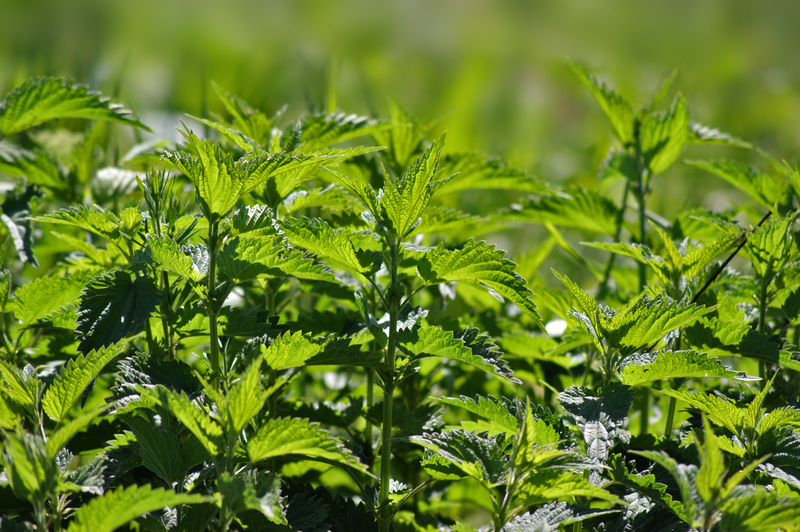Dog-Friendly Gardening Techniques for All Seasons
Posted on 24/05/2025
Dog-Friendly Gardening Techniques for All Seasons: A Comprehensive Guide
Gardening is a delightful hobby for many, but it can pose unique challenges when you share your space with furry companions. Fortunately, creating a dog-friendly garden that thrives in every season is entirely possible with well-planned strategies. In this comprehensive article, we'll explore smart, dog-friendly gardening techniques and seasonal tips to help pet parents enjoy a beautiful, safe, and low-maintenance landscape all year long.

Why Prioritize a Pet-Safe Garden?
Your garden can be a haven of curiosity, play, and relaxation for your canine friends. However, many conventional gardening methods and plants can pose risks. The goal? To cultivate an outdoor environment that ensures the health and happiness of your dog while keeping your garden blooming through winter, spring, summer, and autumn.
- Prevent accidental poisoning or injuries by avoiding hazardous plants and chemicals.
- Reduce destruction from digging and running with smart landscaping choices.
- Promote your dog's well-being and exercise.
- Maintain a vibrant and resilient garden throughout the seasons.
Choosing the Right Plants for Year-Round Pet Safety
Spring and Summer Dog-Friendly Plant Choices
- Basil, thyme, and rosemary: These herbs are non-toxic and practical for culinary uses.
- Sunflowers and marigolds: Cheerful, hardy, and harmless to dogs.
- Camellias and snapdragons: Beautiful blooms that bring color without risk.
- Violets and zinnias: Safe for curious canines who might nibble petals.
Autumn and Winter Dog-Safe Planting Options
- Pansies and calendula: Withstand cooler temperatures and brighten up the garden.
- Ornamental kale and cabbage: Add texture and are non-toxic.
- Wintergreen: Provides color and is dog-friendly.
- Dogwood (Cornus alba): Hardy shrubs perfect for winter displays.
Tip: Always consult the ASPCA's list of toxic and non-toxic plants before adding any new greenery to your yard.
Landscaping Strategies for Canine Companions
Designing Dog Paths and Play Zones
Active dogs will naturally create their own trails and play areas. Instead of fighting this tendency, embrace it in your dog-friendly garden design:
- Create defined dog paths using materials such as mulch, gravel, or flagstone.
- Establish a designated digging area to satisfy your pet's instincts, using sand or loose soil--and hide toys there for fun!
- Build natural barriers with dense, non-toxic shrubs to protect delicate flower beds.
- Install sturdy fencing to keep your pup secure and discourage garden escapes.
Ground Covers that Stand Up to Paws
Certain grass and ground cover species are more tolerant of heavy use and dog traffic:
- Kentucky bluegrass, perennial ryegrass, and Bermuda grass: These are hardy, durable lawns that recover quickly from wear.
- Clover: Soft for feet, tolerates some shade, and resists urine spots.
- Creeping thyme and Irish moss: Excellent for pathways--safe for dogs and low maintenance.
Mulch & Pesticides: Pet-Safe Choices
- Use dog-safe mulch, such as cedar or pine bark (avoid cocoa mulch--it's toxic to pets).
- Rely on natural pest control methods like neem oil, diatomaceous earth, or introducing beneficial insects such as ladybugs and nematodes.
- Avoid chemical fertilizers and herbicides; opt for organic compost and manual weed removal.
Dog-Friendly Gardening Through the Four Seasons
Spring Gardening with Dogs
- Check for winter hazards: Remove any toxic plant debris, sharp branches, or leftover ice-melting chemicals.
- Early planting tips: Focus on dog-safe perennial flowers and seed starting in fenced-off or raised beds.
- Install temporary barriers to protect tender new growth from enthusiastic paws.
- Supervise exploration: Walk your dog through the garden often to train them on permitted and off-limit areas.
Summer Dog-Friendly Yard Management
- Provide plenty of water: Consider installing a pet-friendly water feature like a shallow fountain or splash pad.
- Shady spots for hot days: Use trees, shrubs, or sun sails for shady relaxation zones.
- Beat the heat with cool grass: Keep lawns mowed and well-watered to avoid burnt paws.
- Secure compost bins: Dogs are drawn to smells--keep garden waste out of reach to avoid accidental ingestion.
- Watch for pests: Use dog-safe insect controls and check dogs for ticks after garden time.
Autumn Tips for Pet Parents in the Garden
- Leaf pile patrol: Rake regularly--mushrooms and mold can thrive in leaf litter and pose risks for curious dogs.
- Bulb planting caution: Many spring-flowering bulbs (like tulips and daffodils) are toxic; use bulb cages and label clearly.
- Harvest safely: If growing fruits or veggies, keep dogs away from windfalls and rotting produce.
- Prepare for wet weather: Install stepping stones or gravel paths to minimize muddy paws.
Winterizing Your Pet-Friendly Garden
- Protect from ice melt toxins: Use pet-safe ice melts and avoid salt spills near the garden.
- Cover sensitive plants: Use burlap wraps and mulch for insulation--be sure all materials are non-toxic.
- Create sheltered play spaces: Even a small dog house or covered patio helps your pet enjoy garden time every season.
- Monitor for toxic evergreens and berries: Remove holly, yew, and mistletoe--these are dangerous if ingested.
Training and Enrichment for Garden-Savvy Dogs
Gardens offer endless enrichment opportunities for dogs--use these techniques to support positive garden behaviors year-round:
- Positive reinforcement: Reward your dog for staying on paths or away from sensitive beds.
- Interactive garden toys: Hidden treat puzzles or safe chew toys can keep doggy minds and bodies busy.
- Establish routines: Consistent supervision and clear "off-limits" zones will make boundaries second nature.
- Seasonal scent games: Hide treats in safe understory areas to exercise your dog's nose and brain.
Common Plants and Materials to Avoid in Pet-Centric Gardens
Not all garden staples are pet-friendly. Always avoid the following common hazards in your dog-safe landscaping:
- Cocoa mulch (contains theobromine, like chocolate)
- Oleander, foxglove, and digitalis: Highly toxic florals
- Daffodil and tulip bulbs (if chewed or dug up)
- Sago palm: Even small amounts are deadly to dogs
- Azaleas, rhododendrons, yew, and dieffenbachia: Avoid these in any dog-friendly yard
- Chemical pest controls: Insecticides and rodenticides should never be used where pets play
Dog-Friendly Composting and Fertilizing Tips
Creating healthy, lush gardens often means rich compost and fertilizers, but not all are safe for pets:
- Use only well-aged compost: Fresh compost may contain mold or food scraps toxic to dogs.
- Opt for bone meal and blood meal alternatives: These attract dogs and can cause digestive upsets; use seaweed-based or plant-based fertilizers.
- Cover compost piles securely and keep them fenced off.
- Manure safety: Only use thoroughly composted manure, as raw manure can contain pathogens.

Additional Tips for a Stunning, Pet-Friendly Landscape
- Elevated planters and containers: These keep delicate herbs and flowers out of paw's reach--and bring pops of color higher up.
- Multi-sensory experiences: Add ornamental grasses, safe edible plants, and textured paths to stimulate your dog's senses.
- Non-toxic hedge borders: Boxwood, viburnum, and dogwood are tough and safe choices.
- Attract birds--but not dangerous wildlife: Decorative bird baths or feeders placed out of reach can attract songbirds without drawing predators.
- Lighting for evening enjoyment: Solar-powered, low-voltage lights enhance both security and garden enjoyment at night.
Conclusion: Enjoy Every Season with Dog-Safe Gardening
With the right dog-friendly gardening techniques for all seasons, you and your four-legged friends can share a vibrant, interesting, and secure outdoor space. Emphasize non-toxic plants, sturdy landscaping, and clever design to create a sanctuary for both people and pets. Every season brings new opportunities--whether you're nurturing seedlings in spring, relaxing in a shady summer nook, romping through autumn leaves, or spotting winter birds together.
Invest in your dog-friendly garden year-round, and your whole pack will reap the rewards in health, happiness, and natural beauty.



